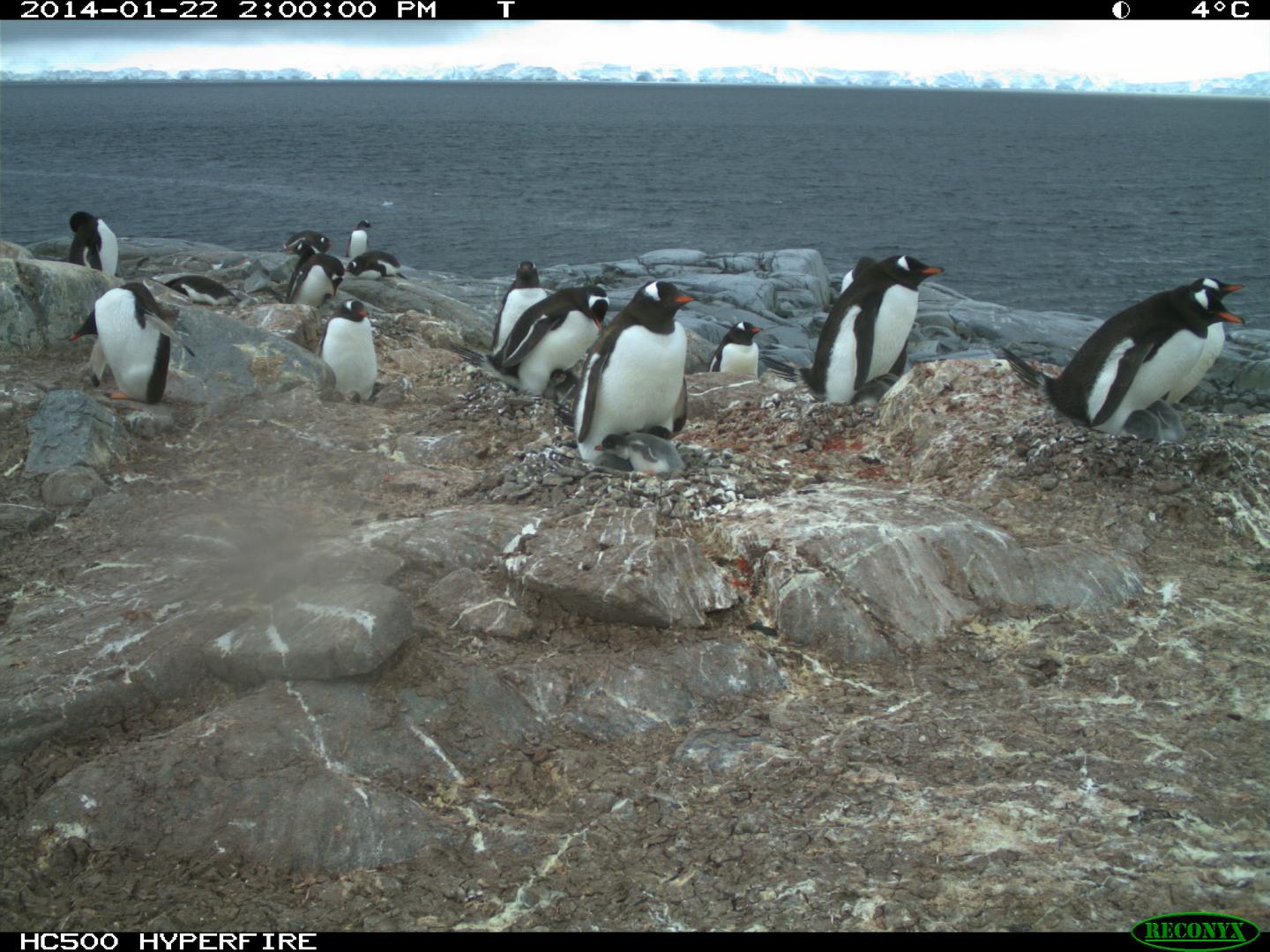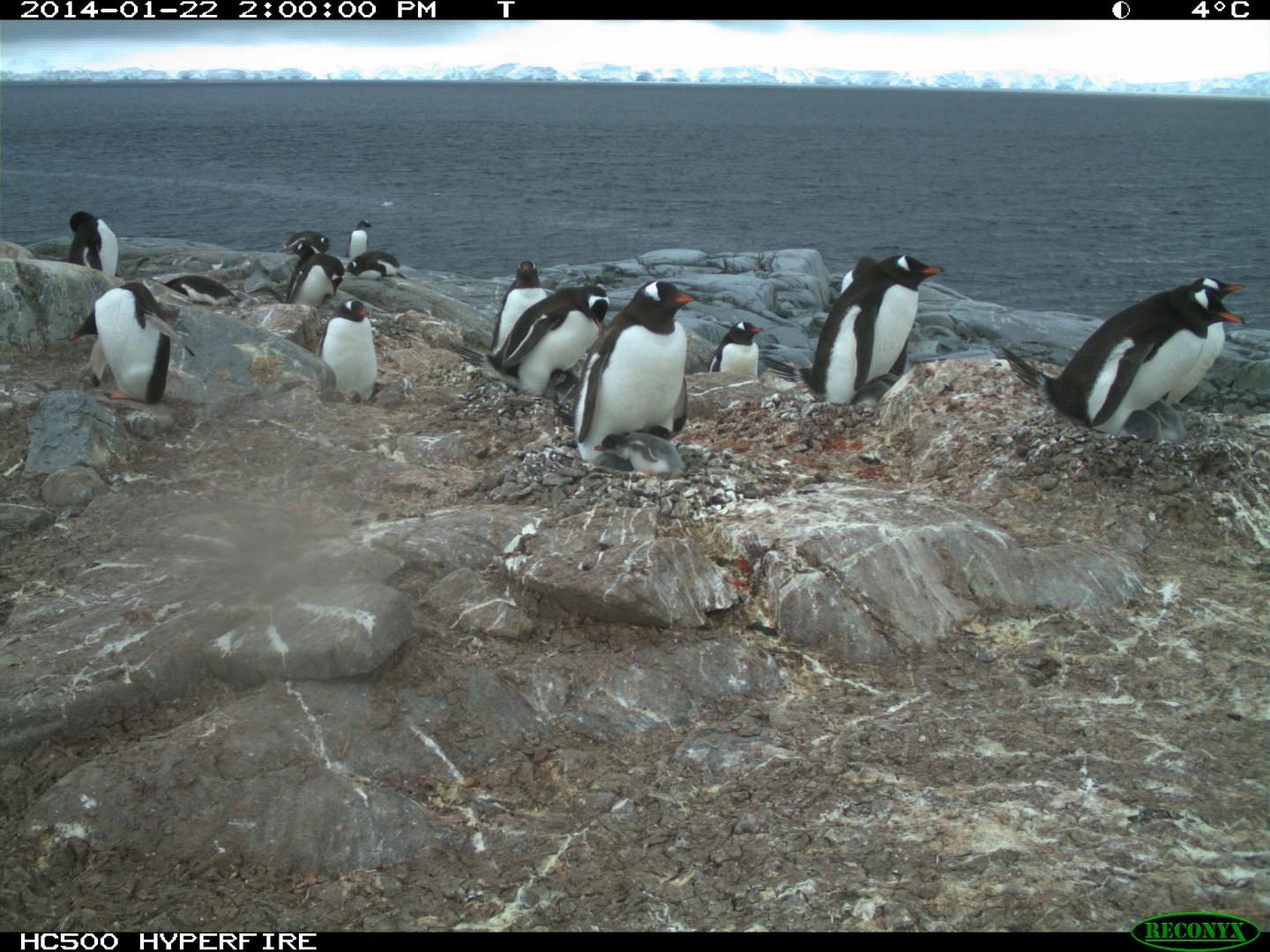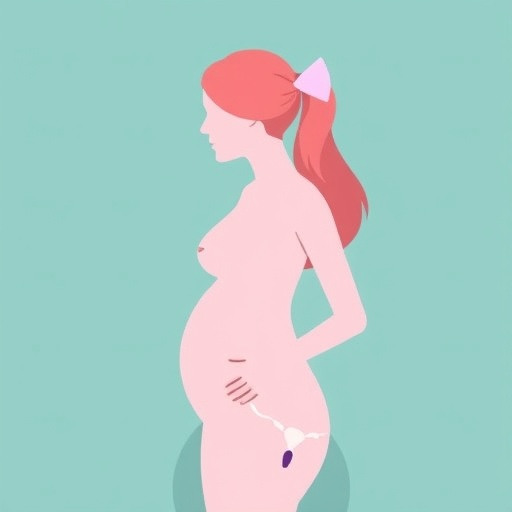
Credit: T. Hart
Not even the most intrepid researcher wants to spend winter in Antarctica, so how can you learn what penguins are doing during those cold, dark months? Simple: Leave behind some cameras. Year-round studies across the full extent of a species' range are especially important in polar areas, where individuals within a single species may adopt a variety of different migration strategies to get by, and a new study from The Auk: Ornithological Advances uses this unique approach to get new insights into Gentoo Penguin behavior.
Gentoo Penguins are of interest to scientists because they're increasing at the southern end of their range in the Western Antarctic Peninsula, a region where other penguin species are declining. Little is known about their behavior during the nonbreeding season, so Caitlin Black and Tom Hart of the University of Oxford and Andrea Raya Rey of Argentina's Consejo Nacional de Investigaciones Cientificas y Técnicas used time-lapse cameras to examine patterns in Gentoo Penguins' presence at breeding sites across their range during the off season. They found both temporal and spatial factors driving winter attendance–for example, more Gentoo Penguins were present at breeding sites when there was open water or free-floating pack ice than when the shoreline was iced in, and more Gentoo Penguins were at breeding sites earlier in nonbreeding season than later.
The researchers deployed the cameras at seven sites including Argentina, Antarctica, and several islands. Each camera took eight to fourteen photos per day, and volunteer "citizen scientists" were recruited to count the penguins in each image via a website (penguinwatch.org). Overall, the seven sites fell into three distinct groups in terms of winter attendance, each with its own patterns of site occupation. These findings could have important implications for understanding how localized disturbances due to climate change and fisheries activity affect penguin populations during the nonbreeding season.
"Working with cameras allows us to understand half of this species' life without having to spend the harsh winter in Antarctica. It has been exciting to discover more about why Gentoos are present year-round at breeding sites without having to handle a single bird," says Black. "I believe the applications for this technology are far-reaching for colonial seabirds and mammals, and we are only just beginning to discover the uses of time-lapse cameras as deployed virtual ecologists in field studies."
"What most seabirds do away from their nest is often anybody's guess. For Antarctic birds, this is compounded by the long periods of darkness that penguins and others must face in the winter," adds Mark Hauber, Editor-in-Chief of The Auk: Ornithological Advances and Professor of Animal Behavior at Hunter College and the Graduate Center of the City University of New York. "This new research in The Auk: Ornithological Advances on Gentoo Penguins colonies reveals critical year-to-year differences in where the birds are when they are not nesting: In some years, only the most temperate sites are visited, and in other years both southerly and northerly locations are busy with penguins."
###
"Peeking into the bleak midwinter: Investigating nonbreeding strategies of Gentoo Penguins using a camera network" will be available April 19, 2017, at http://americanornithologypubs.org/doi/full/10.1642/AUK-16-69.1 (issue URL).
About the journal: The Auk: Ornithological Advances is a peer-reviewed, international journal of ornithology that began in 1884 as the official publication of the American Ornithologists' Union, which merged with the Cooper Ornithological Society in 2016 to become the American Ornithological Society. In 2009, The Auk was honored as one of the 100 most influential journals of biology and medicine over the past 100 years.
Media Contact
Rebecca Heisman
[email protected]
http://americanornithologypubs.org/
############
Story Source: Materials provided by Scienmag





